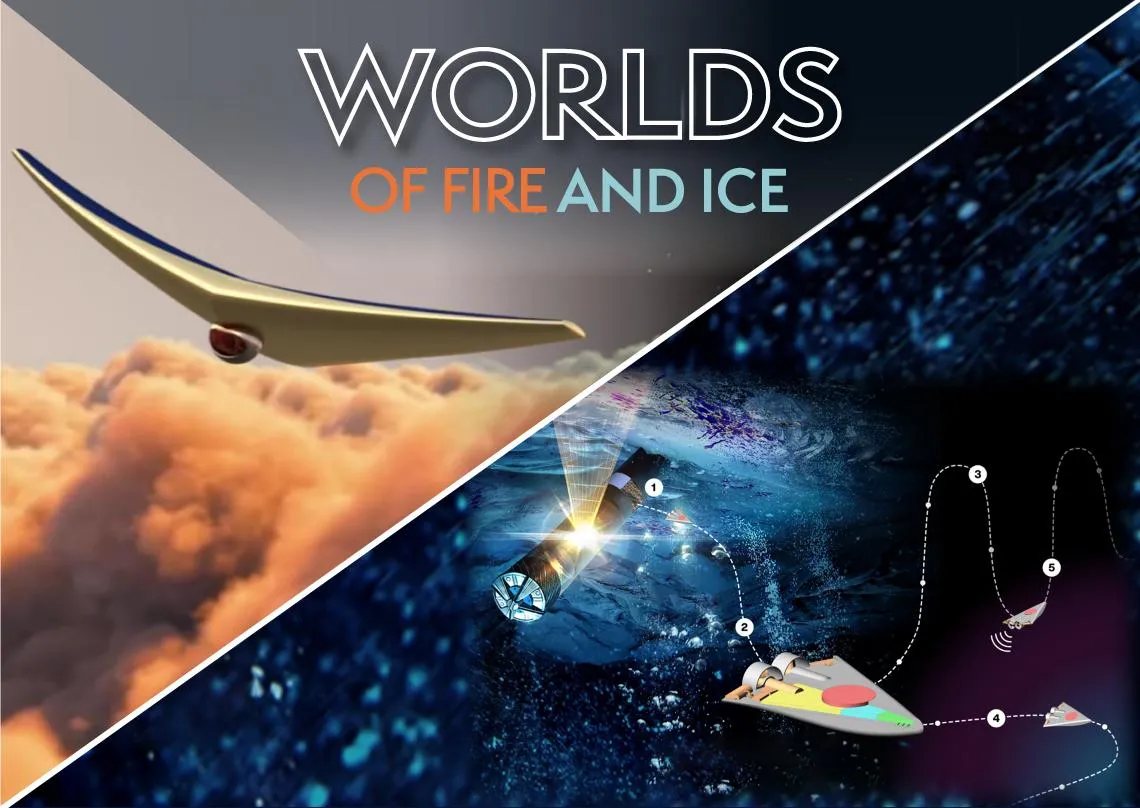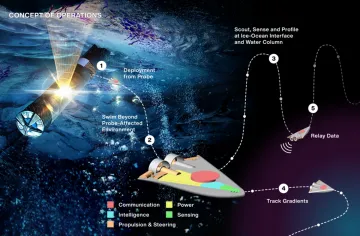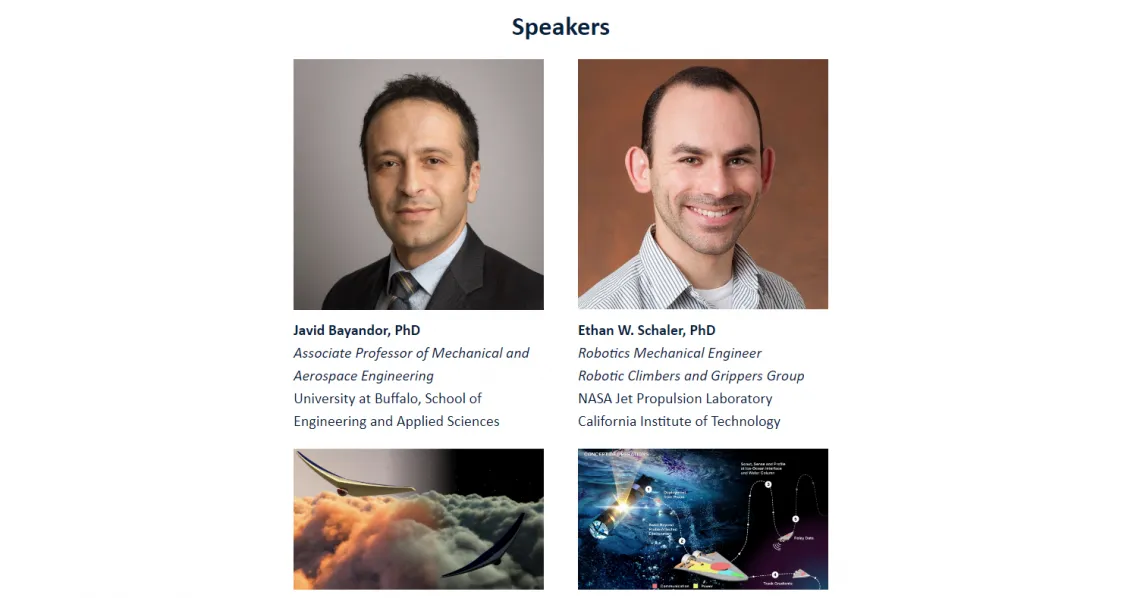Saturday, Sept. 24

A SciFi to SciFact lecture presented by NIAC
Saturday, September 24
3:30-5:00PM
Free
Seating is limited and offered on a first-come, first-served basis.
There is no pre-registration for this event.
Come to Flandrau Science Center & Planetarium for a free "SciFi to SciFact" lecture in collaboration with NASA Innovative Advanced Concepts (NIAC) on Saturday, September 24 at 3:30PM.
Two researchers, Javid Baynador and Ethan Schaler, have envisioned new ways to explore the sweltering skies of Venus and the icy ocean moons of our solar system, respectively. Come discover how these scientists are helping us rethink the boundaries of science fiction while learning more about their journeys as scientists.
A Q&A session will follow the presentations.

Javid Bayandor
State University of New York
The Bioinspired Ray for Extreme Environments and Zonal Exploration (BREEZE) combines inflatable structures with bioinspired propulsion to create a versatile flier for exploration of Venusian atmosphere. BREEZE will navigate the atmosphere at altitudes between 50-60 km, riding zonal winds and overcoming the meridional winds to circumnavigate the planet every 4-6 days. BREEZE’s scientific payload of a nephelometer, anemometer, magnetometer, a mass spectrometer, THEMIS, synthetic aperture RADAR, and visible light camera will enable controllable selection of dispersed or repeated location sample collection for atmospheric and geographic studies. These studies include tracking weather patterns, determining atmospheric constituents, mapping Venusian magnetic field, and creating detailed surface scans. BREEZE will maintain near continuous communication with Earth by relaying information through its orbiting module. The science enabled by BREEZE makes it the ideal approach for the Venus Climate Mission presented in the 2013-2022 Decadal Survey.

Ethan Schaler
NASA JPL
The next decades of space exploration will focus on Ocean Worlds – especially Enceladus, Europa, and Titan – whose liquid oceans beneath kilometers of icy crust are some of the most likely locations beyond Earth to harbor life. To access these aquatic environments, NASA is developing and maturing numerous ocean-access mission concepts, including the Scientific Exploration Subsurface Access Mechanism for Europa (SESAME) class of thermo-mechanical drilling robots. We propose developing SWIM – Sensing with Independent Micro-swimmers – dramatically expand the capabilities of SESAME-class ocean-access robotic missions and significantly increase their likelihood of detecting evidence of habitability / biomarkers / life.


